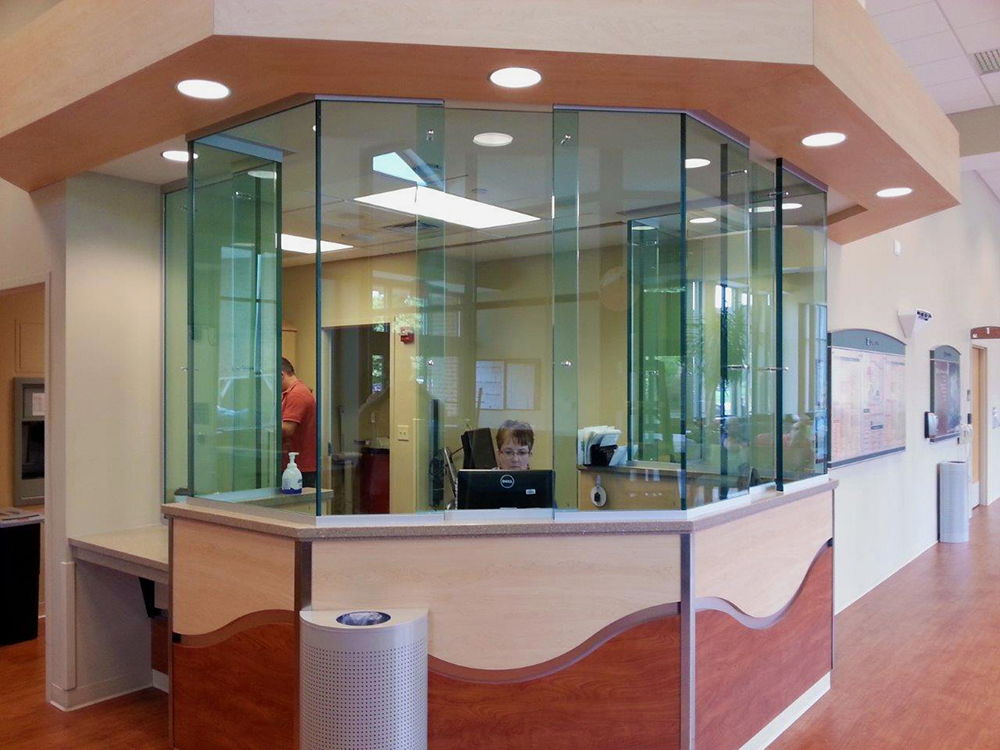Life safety is top of mind for any facility manager or administrator, and even more so for those in healthcare. Hospitals and clinics can be high risk workplaces that pose threats from needle sticks, slippery floors, heavy lifting, and disoriented patients. But hospitals are also an increasingly violent place to work, and this fact is taking its toll both on the people who provide care and the quality of care they are able to provide.
Eighty Percent of Nurses are Attacked Each Year
The 2012 Crime and Security Trends Survey sponsored by the International Association for Healthcare Security and Safety (IAHSS) found that in just two years crimes committed in U.S. healthcare facilities rose 37 percent, from just under 15,000 events to more than 20,500. That same year a study from the Johns Hopkins Office of Critical Event Preparedness and Response found that while healthcare facility location (rural, urban, large campus or small clinic) did little to predict the rate of gun violence in a facility, geographic location did have an impact on the frequency of such attacks. The study revealed that 44% of all reported hospital shootings occurred in the South, compared to just 15% in the Northeast, with the remainder split evenly between the West and Midwest.
Additional crime studies have also uncovered that nurses are the primary target of hospital violence. In a paper published in the January 2015 Journal of Emergency Nursing, Karen Gabel Speroni and her co-authors reported that in the course of a given year more than 76% of the nurses they surveyed experienced violence, with emergency nurses experiencing a “significantly greater number of incidents.”
Hospital Violence: A Costly Trend
As Lisa Wolf, a registered nurse and research director for the Emergency Nurses Association, told Scientific American in 2014, “There is a top-to-bottom cultural assumption that violence is part of the job. It goes from the bedside up to the judicial system.” Sadly, this has been internalized by nurses themselves. According to one survey by the Emergency Nurses Association, most nurses feel unsupported and exposed when it comes to violence in the workplace, with most assaults (both verbal and physical) going unreported.
What’s more, violent workplace conditions are expensive. It costs between $27,000 and $103,000 to replace a nurse who is too injured (or too emotionally burned out) to return to work. According to a 2013 OSHA factsheet, healthcare operations pay out about $2 billion each year in workman’s compenation claims, roughly a third of which is entirely the result of patient-inflicted injuries.
Enclosures and Barriers Increase Security, Decrease Incidents
Thankfully, there are cost effective security solutions to help curtail workplace violence.
As Wolf told Scientific American last year, the “epicenter of the problem [is] in the ER.” In their 2011 Emergency Department Violence Surveillance Study the Emergency Nurses Association reported that “the presence of an enclosed nurses’ station” correlated with significant reductions in verbal assault against staff, halving such incidents. This basically mirrored the findings from a 2008 study published in the Annals of Epidemiology, which found that increased hospital security in accordance with the California Hospital Safety and Security Act of 1995 decreased assault rates by 48%.
Barrier-based security—including deep service counters, and bullet-resistant/shatterproof enclosures for reception areas, some triage areas, and nurses’ stations—are specified by the California Hospital Safety and Security Act of 1995, as well as current Occupational Safety and Health Administration (OSHA) guidelines. The NIOSH (the Centers for Disease Control’s National Institute for Occupational Safety and Health) has long recommended installing security barriers in hospitals.
Bullet Proof Barrier Systems for Emergency Departments
For decades, Total Security Solutions CEO Jim Richards has designed, engineered, manufactured, and installed barrier-based systems and has witnessed how effective they can be in this environment:
“People think of these barriers and think of banks, liquor stores—places where crime is economically motivated. They don’t think of hospitals. More than anything, a bullet proof system is an effective deterrent to violence of all sorts. Just the presence of the system itself prevents escalation. I’ve seen this time and again in my work, and the research seems to bear it out: Bulletproof glass is an excellent deterrent to all kinds of violence.”
Retrofitting an emergency department or triage center with a bullet proof system can be a fairly straightforward renovation, with little disruption to hospital operations—even when that includes a 24/7, high-traffic emergency reception area.
NEXT STEPS:
- Schedule a free bulletproof glass project design spec review
- Visit our blog for the latest industry news
- Follow us on Twitter, Facebook or LinkedIn


